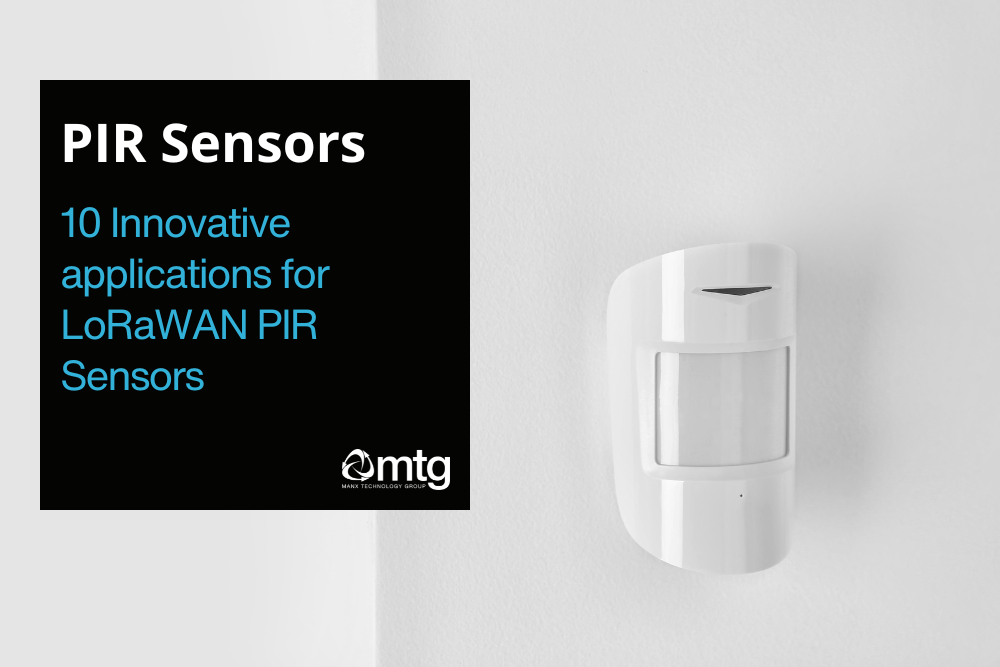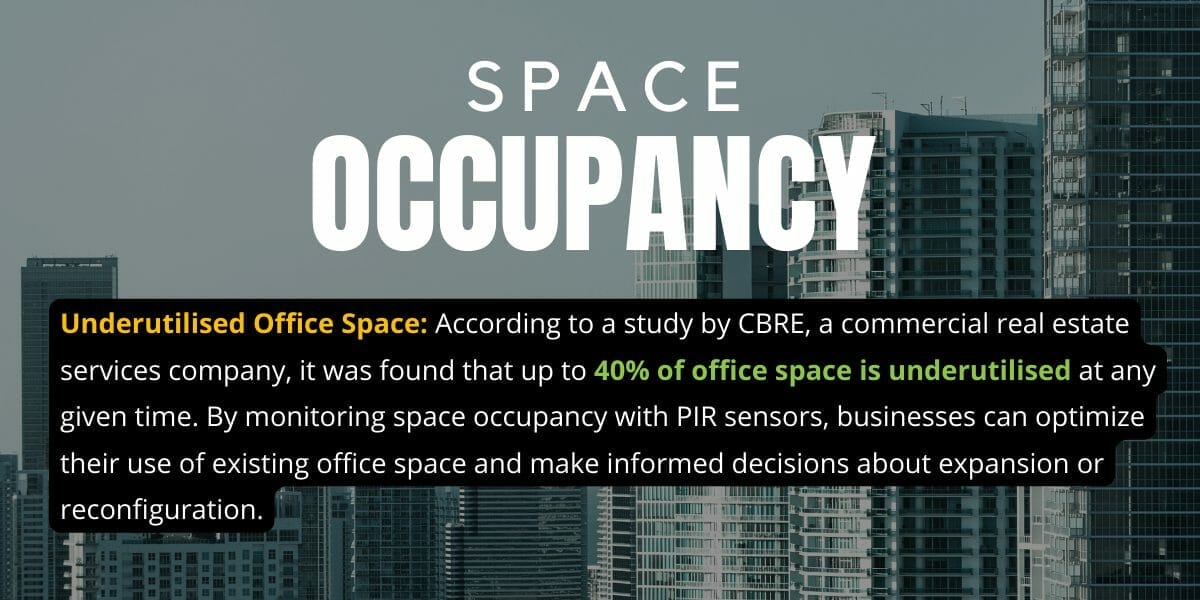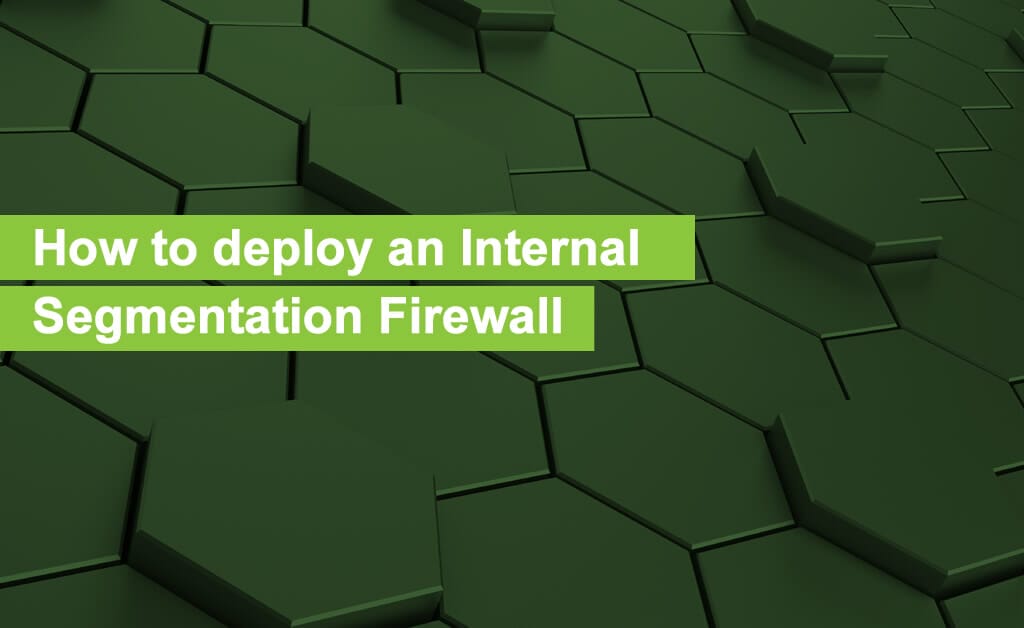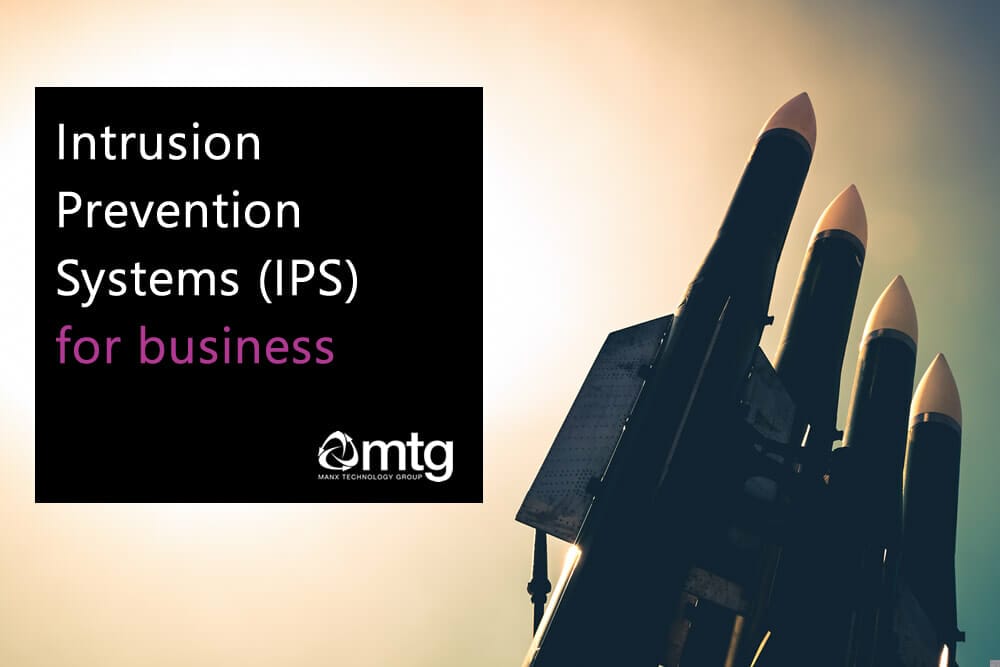In recent years, the Internet of Things (IoT) has seen an explosion of innovative new applications in various fields, including building automation, environmental monitoring, and security. One of the key components of IoT is sensors, which are used to gather data and provide insights into various processes and environments.
Among the many types of sensors available, LoRaWAN battery-powered PIR (Passive Infrared) sensors have emerged as a popular and versatile option. These sensors can detect occupancy while using low-power, long-range wireless communication technology to transmit data over long distances, making them ideal for IoT applications in remote or hard-to-reach locations.
In this blog post, we will explore eight innovative applications of LoRaWAN battery-powered PIR sensors in IoT. From optimising space utilisation to elderly care and beyond, we will highlight the diverse range of ways these sensors can improve efficiency, enhance safety, and optimize various processes.
PIR sensors are perhaps one of the most inexpensive sensor types, yet their applications are endless. So, let’s dive in and discover the many possibilities of LoRaWAN battery-powered PIR sensors in IoT!
1 – Building Security
While we would not recommend that LoRaWAN sensors replace an intruder alarm system, they can be used as an inexpensive way to monitor vacant properties or remote locations such as sub-stations and telecoms POPs. When occupancy is detected, alerts can be triggered via SMS, e-mail, or platforms such as Microsoft Teams.
- Construction sites: Install PIR sensors in a construction site’s storage area to detect unauthorised access after working hours. Alerts can be sent to the site manager or security personnel for a quick response.
- Restricted Area Access: Deploy PIR sensors in sensitive areas such as server rooms or storage facilities containing valuable assets. If an unauthorized person enters the area, the sensor can trigger a silent alert to the security team for immediate action.
- Maintenance Monitoring: Use PIR sensors to monitor rarely accessed areas like rooftops, basements, or utility rooms. If unexpected movement is detected, it could indicate maintenance issues that need to be addressed, such as a water leak or a damaged door.
- Perimeter Monitoring: Place PIR sensors along a facility’s fence line or outer walls to detect any movement in restricted areas. This can help security personnel monitor the perimeter and identify potential trespassers.
2 – Safety Monitoring with PIR sensors
Detect human activity in hazardous areas and alert workers, ensuring their safety.
- Sewage treatment or chemical plants: place PIR sensors near hazardous zones to detect human presence. The system alerts supervisors and emergency response teams if a worker accidentally enters the area.
- Industrial Safety: Install PIR sensors near heavy machinery or equipment in a manufacturing facility. If a worker enters a dangerous zone while the machinery is operational, the system can alert the operator to stop the machine, preventing potential accidents.
- Warehouse Safety: Use PIR sensors to monitor warehouse forklift paths and high-traffic areas. If a person is detected in these areas, an alert can be sent to the forklift operator or warehouse staff, reducing the risk of collisions or accidents.
3 – Space occupancy

Sensors can be deployed throughout an office to indicate how often meeting rooms are used, desk or pod usage and toilet facilities. The occupancy data can prove vital when planning office moves, expansions or considering an investment in existing office facilities. Understanding how a space can be used can help shape decision-making from an investment standpoint or organisational change.
- Public Transportation: Install PIR sensors at train stations or bus stops to monitor passenger traffic. Transit authorities can use this information to optimise schedules and allocate resources.
- University Campus Management: Install PIR sensors in lecture halls, study rooms, and common areas on university campuses. This information can help administrators plan room allocations, schedule maintenance, and optimize space usage for student needs.
- Workplace Optimisation: Place PIR sensors in office spaces to monitor the usage of individual workstations, meeting rooms, and common areas. This data can help management make informed decisions about office layout, remote working policies, or the need for additional space.
These space occupancy examples illustrate the versatility of PIR sensors in monitoring and optimising various spaces to enhance efficiency, user experience, and resource allocation.
Underutilized Office Space: According to a study by CBRE, a commercial real estate services company, it was found that up to 40% of office space is underutilized at any given time. By monitoring space occupancy with PIR sensors, businesses can optimize their use of existing office space and make informed decisions about expansion or reconfiguration.
4 – Elderly Care
In sheltered housing or where independent living is encouraged, sensors can detect the presence of elderly people in a room and send alerts to caregivers, ensuring their well-being. Sensors can be used to detect activity or inactivity. For example, if a resident has not entered the kitchen in 12 hours, the warden or familiar members can be alerted.
- Place PIR sensors in the living room, bedroom, and bathroom of an elderly person’s home. If there’s no movement detected for an extended period, a caregiver can receive an alert to check on the person’s well-being.
- Bathroom Monitoring: Install PIR sensors in the bathroom to detect if the elderly person has been inside for an unusually long time. If the sensor detects prolonged occupancy, an alert can be sent to a caregiver to check on the individual’s safety.
- Nighttime Safety: Install PIR sensors in hallways and near the bed to detect when the elderly person gets up during the night. The sensors can be connected to a smart lighting system to automatically turn on dim lights, providing guidance and reducing the risk of falls.
- Fall Detection: Install PIR sensors in key areas, such as the bedroom, bathroom, and living room. If a sudden change in movement is detected, possibly indicating a fall, an alert can be sent to caregivers or family members to check on the individual’s well-being.
5 – Hospitality

Detect the presence of guests in hotel rooms and activate room features such as lighting and entertainment systems, improving guest experience and reducing energy consumption. PIR can also be deployed in corridors and stairwells to provide a helpful occupancy baseline. While the sensors will not count people (there are other sensors for that), they will indicate when the areas have been occupied.
- Housekeeping Optimisation: Use PIR sensors to monitor when guests leave their rooms, allowing housekeeping staff to clean rooms more efficiently without disturbing guests. This can improve guest satisfaction and optimize housekeeping schedules.
- Common Area Management: Deploy PIR sensors in lobbies, lounges, and fitness centres to monitor occupancy and usage patterns. This data can help hotel management allocate resources, schedule cleaning, and adjust lighting and temperature for optimal guest comfort.
- Restaurant and Bar Management: Place PIR sensors in dining areas to monitor customer traffic, peak times, and table turnover rates. This data can help restaurant managers optimize staffing, seating arrangements, and menu offerings to enhance guest experience and revenue.
Guest Satisfaction: A study by Cornell University’s Center for Hospitality Research found that a 1% increase in guest satisfaction scores led to a 1.42% increase in revenue per available room (RevPAR). Utilizing PIR sensors to enhance the guest experience through efficient housekeeping, personalized room settings, and optimized common areas can increase guest satisfaction and overall revenue.
6 – Public Facilities
PIR sensors can be used to assess the usage of public facilities such as bus stops, public toilets, stairwells or elevator systems. As an inexpensive sensor, PIR can be deployed quickly and easily – providing rich data points that can be used to influence investment or shape policy.
- In a public park, deploy PIR sensors in playgrounds, restrooms, and picnic areas. The gathered data can help park management understand peak usage times and allocate resources for maintenance more efficiently.
- Public Toilets: Install PIR sensors in public toilets to monitor usage and occupancy. This data can help facility managers schedule cleaning, restocking, and maintenance more efficiently, ensuring clean and well-maintained restrooms for users.
- Library Space Optimisation: Place PIR sensors in library areas such as reading rooms, study areas, and computer labs to track occupancy and usage patterns. This information can help librarians optimize space allocation, seating arrangements, and resource availability to serve patrons better.
- Elevator and Escalator Management: Install PIR sensors near elevators and escalators to monitor usage patterns and detect potential issues, such as overcrowding or malfunctioning equipment. This information can help facility managers address problems quickly and ensure safe, efficient operations.
- Transportation Hub Monitoring: Place PIR sensors at entrances and exits of bus stops, train stations, and airports to monitor passenger traffic. Transport authorities can use this information to optimize schedules, allocate resources, and improve overall service for travellers.
Conclusion
LoRaWAN battery-powered PIR sensors offer various innovative applications across various sectors, including building security, safety monitoring, space occupancy, elderly care, hospitality, and public facilities. These cost-effective and versatile sensors have the potential to significantly improve efficiency, enhance safety, and optimize processes in numerous settings.
By leveraging the power of IoT and data insights provided by PIR sensors, organizations can make informed decisions that lead to better resource allocation, improved user experiences, and overall operational excellence. As technology advances, the possibilities for PIR sensor applications will only grow, making them indispensable tools for future innovation and progress.





